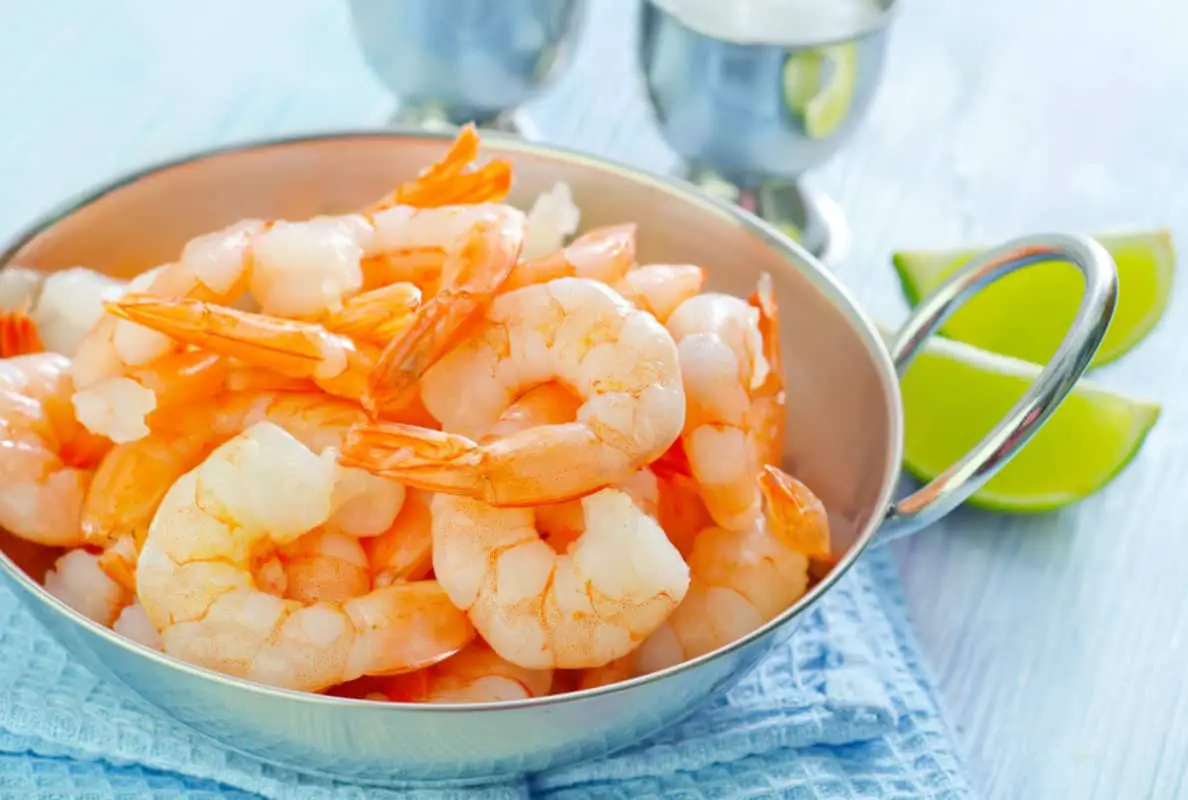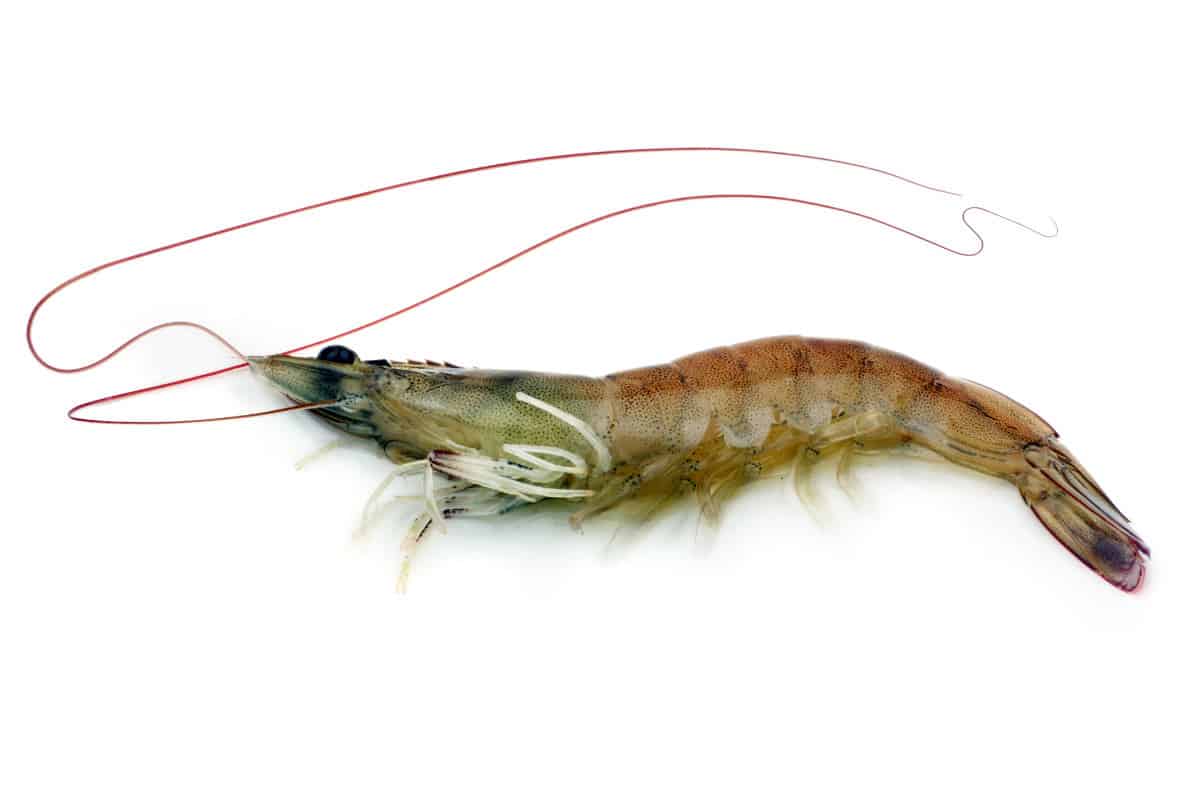I went recently on a fishing trip and was curious to learn whether or not I could eat the remaining shrimp that I didn’t use for bait. So, I did some research to find out if it was safe. This article is about my findings.
You can safely eat bait shrimp in certain conditions. For instance, you should avoid ones that were frozen or don’t survive through your day of fishing. However, if they survive until you get home, you might consider eating them after you clean and devein them.
NOTE: Even with safety precautions like these, bait shrimp should be eaten at your own risk.
Eating leftover bait shrimp might seem risky, but if they are alive up to prepping them to cook, there is less risk in doing so. Read on to learn more about what’s safe, what’s not, and the difference between shrimp caught for bait versus shrimp caught for consumers.
Are Bait Shrimp Safe to Eat?
It might surprise you to learn that you can sometimes eat the bait shrimp remaining after your day of fishing. If they are fresh, live shrimp (rather than frozen), it might be good to cook up in your dinner.
However, there is more to it than simply being frozen or live shrimps. Read on to learn about conditions. It is safe (or isn’t safe) to eat them.
When Bait Shrimp Are Not Safe to Eat?
It might be tempting to add leftover bait to your dinner. You wouldn’t want them to end up in the trash, right? However, there are several reasons you should avoid adding particular sea creatures to your dinner after a day out fishing.
If any of the following apply to your bait, don’t eat the shrimp:
● The bait shrimp is frozen: Never eat frozen bait shrimp. You don’t know if they were alive or dead upon freezing, and you, therefore, don’t know if they are preserved safely for human consumption.
● The bait used is dead: Never eat a dead shrimp—especially if you bought it that way. You don’t know how long they’ve been dead or what they died from. You also don’t know what they were preserved with (or if anything was used at all).
● The shrimp aren’t from a trusted bait shop: If the bait shop you visit isn’t one you trust, don’t eat the leftover bait after you’re done fishing. This is especially true of a shop that isn’t well cared for, or there is dead shrimp in the tanks.
Use your best judgment when you decide to eat shrimp that were purchased as a fishing bait. Remember, you eat them at your own risk.
PRO TIP: If you don’t want to eat them, you can always freeze them for a later fishing trip—just remember to label the bag or container you store them in with permanent marker. List that they are fishing bait shrimp as well as the date they were frozen.
The conditions above are of bait that is not meant for human consumption.
When Bait Shrimp Are Safe to Eat?
It’s safe to eat the shrimp you use for bait in some instances. Check out the list below to learn more.
● The shrimp are alive when you get home from fishing: When you’re ready to cook the shrimp after fishing, they should be alive. As mentioned above, if they’re dead, you don’t know what they died from. Minimize health risks by cooking only live shrimp.
● Only eat shrimp that are from a trusted bait shop: If the bait shop is well managed, it will be clean and free of dead shrimp in the tank. Use your best judgment when following this advice.
● The shrimp are kept in good conditions while you fish: You need to keep the bait shrimp in good condition while you fish. This includes doing a partial water change over several hours as this fishing article details. Adding a few ice cubes in the bucket isn’t a bad idea, either.
Remember to use your best judgment in addition to these pieces of advice. Be sure to read the following section for more information you should follow when cooking your shrimp.
Under these conditions, it’s possible to eat leftover live bait shrimp safely.
If the live bait shrimp survive the day of fishing and make it home with you and meet the above parameters, that means they should be safe to eat.
Are Bait Shrimp Safe to Use for Catching Lobster from the Shore?
Yes, bait shrimp are safe to use to catch lobster from shore. Lobsters are attracted to the scent of shrimp and will come close enough to investigate, making them easy to catch. Just be sure to check local regulations and use a strong enough line to handle the weight of the lobster.
Does Preparing My Bait Shrimp A Certain Way Make Them Safer to Eat?

Cooking your shrimp, a certain way will help minimize incidents such as food poisoning. Remember—never eat bait shrimp raw!
Follow the steps below to ensure safe eating:
- If you have live shrimp leftover after fishing, make sure they are alive right before preparing them.
- Remove the heads of the shrimp. A pull-and-twist method works, but you could also use a knife.
- Clean and devein your shrimp as the fisherman does in this video. He also has seasoning suggestions such as garlic, cayenne pepper, and seafood seasoning.
- Pan-fry the bait shrimp on both sides until they are thoroughly cooked. Raw shrimp, like other raw meat, can lead to food poisoning.
These shrimps can be used in any recipe that calls for shrimp, but if you only have a few left, try adding them to a larger meal to stretch them. Shrimp fried rice, paella, or gumbo are a few examples. You could shrimp or other seafood you have on hand, as well.
While eating remaining shrimp bait might seem risky to some, these steps will minimize most dangers to eating them—namely, food poisoning.
What’s the Difference Between Bait Shrimp and Shrimp Sold as Food?
There are two main differences between bait shrimp and shrimp sold in stores for food:
- The size of the shrimp.
- Whether they are monitored for safety or not.
Let’s discuss this a little more.
Size of The Shrimp
Florida Fish And Wildlife Conservation Commission says, shrimp that caught for food and bait is often the same—pink shrimp—but are simply different sizes.
Smaller, younger shrimp usually live in bays and are common to use for bait. In some places, fishermen say you can find them for as little as two or three dollars per pound! This makes for a great bargain.
Larger, older shrimp usually move out of the bay and are found in more open water—such as shores. These shrimps are not traditionally used for bait, and instead, they are sold to people to eat.
Small shrimp are often used as bait. Larger ones are for human consumption. However, size isn’t the only difference between bait shrimp and the food-grade variety.
Safety Monitoring
The FDA, otherwise known as the Food and Drug Administration, monitors the safety of foods consumers eat in the United States. They monitor everything from harvested food crops to meats, and they also keep track of the safety of seafood.
However, the FDA doesn’t monitor any shrimp (or other bait) that might go through a bait shop.
This is when you need to use your best judgment. As to whether the shrimp from the bait shop seem safe to eat. Of course, this is used in conjunction with the other tips from this article as well.
Because the Food and Drug Administration doesn’t monitor the shrimp sold in bait shops, shrimp from bait shops is ultimately a product you should eat at your own risk.
When it comes to eating the live bait shrimp remaining at the end of a day of fishing, there are safety measures you can take to minimize the risk of problems such as food poisoning. However, because the shrimps aren’t monitored by the FDA, it is an eat-at-your-own-risk kind of item.

